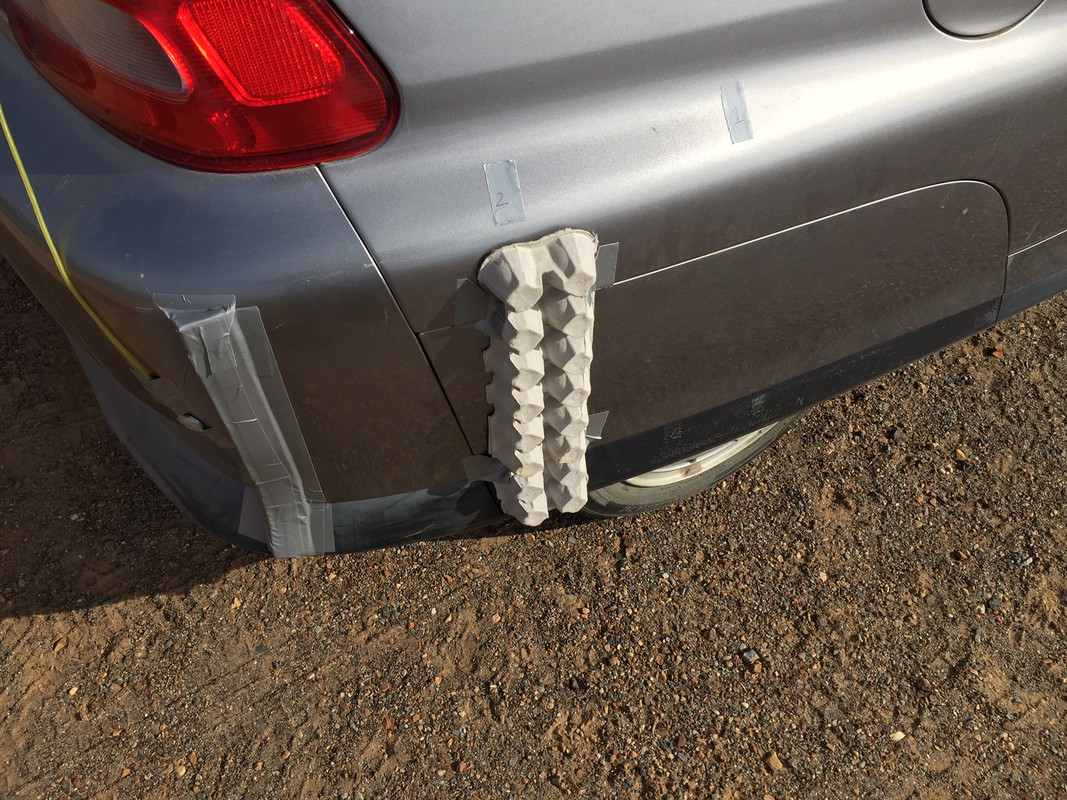So that testing was interesting.
Rob's point was that if the boundary layer is thicker, the strength of trailing vortices at the point of separation are likely to be less strong, as the velocity gradient will be reduced.
So I wondered if thickening the boundary layer prior to the separation edge would result in a higher pressure (ie be improved) behind the separation edge.
Test:
- Honda Insight
- 12 degrees C
- light winds
- 80 km/h
- two way average
- 0-120 Pa Magnehelic
- Pitot tube 2.2m above ground as static reference
- Pressure sensor located just inside wake from separation edge
- One one side tested - other side standard
Separation edge alone: -14 Pa. (Note 1: a different separation edge from the one tested yesterday - smaller, reflecting what will actually be used. Note 2: the same pressure as recorded yesterday - new sep edge works as well as yesterday's, and very repeatable data)
I'd thought I would see if I could thicken the boundary layer with the disruption of a line of egg cartons.

Vertical line of egg crate carton plus separation edge, 80cm forward of separation edge: -18Pa
Vertical line of egg crate carton plus separation edge, 50cm forward of separation edge: -17Pa
Vertical line of egg crate carton plus separation edge, 20cm forward of separation edge (as pictured): -33 pa
So the egg cartons didn't have an impact until they were close to the separation edge, whereupon they dramatically decreased pressure (the opposite of what we want).
I then thought I'd try some Airtabs. (You'd expect to them to make things worse if they inject momentum into the boundary layer.)

Three Airtabs plus separation edge, 20cm forward of separation edge: -18 Pa
Three Airtabs
in reversed orientation, 20cm forward of separation edge: -21 Pa
So the Airtabs basically made no difference to the measured pressure.
As a reminder, yesterday adding the separation edge increased the measured pressure from -30 to -17, so a dramatic improvement.